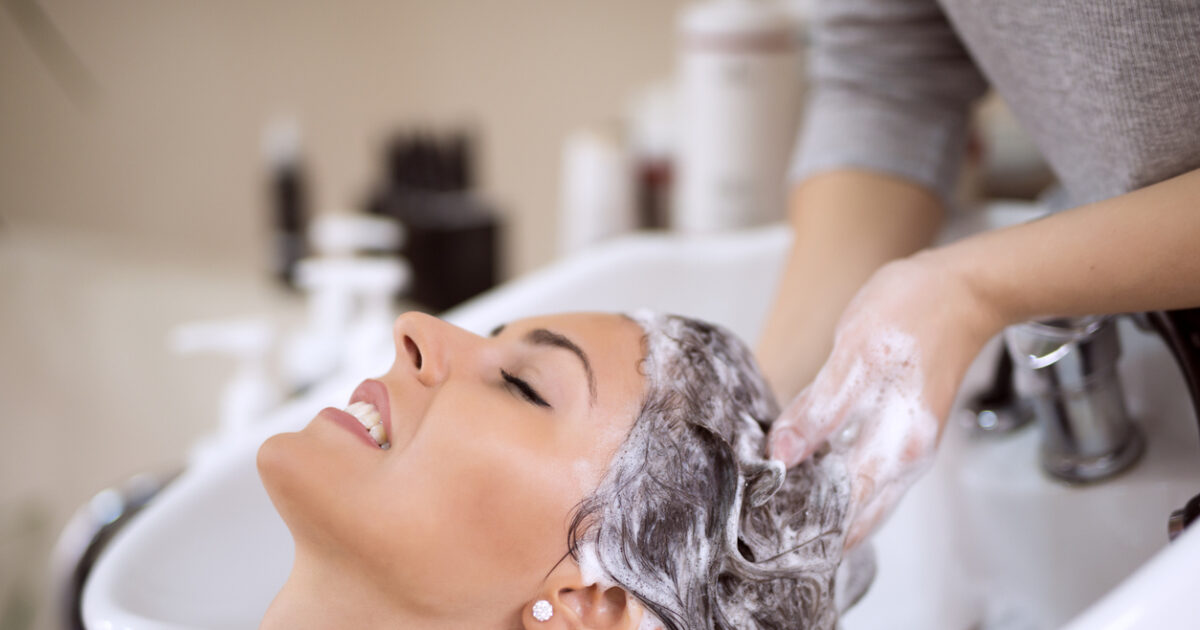The hairdresser It is a place of beauty and relaxation. With the care of our appearance and our hair salon, we enhance our self -esteem and feel more refreshed in our daily lives.
Most people, in fact, enjoy the relaxing massage on their heads during hair bath.
However, there is a rare condition, known as a BPSE stroke syndrome (BPSS), which can, for a small number of people, turn hair bathing into a serious health threat, according to Maria Asiotis, Associate Professor of Neuroscience at the Westmine.
Research shows that excessive slope of the head in the hairdresser can cause neck pain, injury and – in very rare cases – even life -threatening stroke.
The syndrome was first reported in 1993 by American neurologist Michael Weintraub, who found that some of his patients had developed severe stroke -related symptoms after bathing their hair in a hairdresser.
Stroke is a severe brain damage caused by a sudden decrease in blood flow to the brain. Specifically, stroke is caused either by obstruction (ischemic episode) or by rupture of a brain vessel (cerebral hemorrhage).
During hair bathing, customers are usually invited to sit on the chair and tighten their heads back.
Research shows that over -stretching of the head and neck above the rigid lip of the bathroom is the main cause of the hairdresser’s stroke syndrome.
The unusual position of the throat, the neck rotation or the sudden spasmodic movements when bathing, can cause the bones of the upper part of the spine around the area of the neck in one of the main blood vessels that supply it.
Strokes occur mainly in the elderly and people with health problems, such as high blood pressure, diabetes mellitus or high cholesterol.
Research shows that the hairdresser’s stroke syndrome is more likely to occur in women over 50, while risk factors are the history of stenosis of blood vessels and spinal arthritis. However, it can happen to anyone, regardless of age or medical history.
A 2016 Swiss study recorded only ten cases during the period 2002-2013. Although the hairdresser’s stroke syndrome is much less rare than conventional stroke, it is important to know the symptoms.
The signs of BPSS include headache, dizziness, blurred or reduced vision, nausea, vomiting, neck pain and paralysis on one side of the body. Some patients also report a loss of consciousness.
Studies show that these symptoms may be delayed, which makes it difficult for doctors to diagnose if it is a stroke due to the salon or a standard stroke.
If you are worried about the hairdresser’s stroke syndrome or feel pain and annoyance during your stay in the bathroom, ask to tilt your head forward above the bathroom, instead of stretching it backwards. If this is not possible, request either a pillow or a folded towel that will provide your neck support.
The speed at which the hair bathing is made, the time lasting and any power or jerk movement on the head and neck during bathing contribute to the danger. For this reason, ask the hairdresser or hairdresser to gently move during the bath. Also, make sure you do not stay in this position more than needed and update it immediately if you feel any discomfort.
